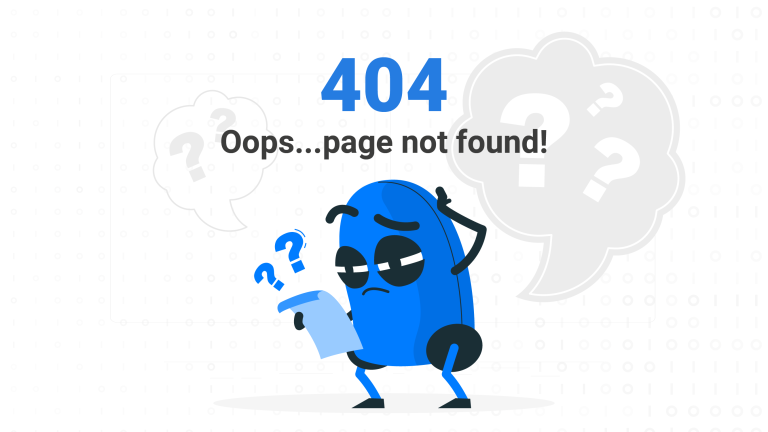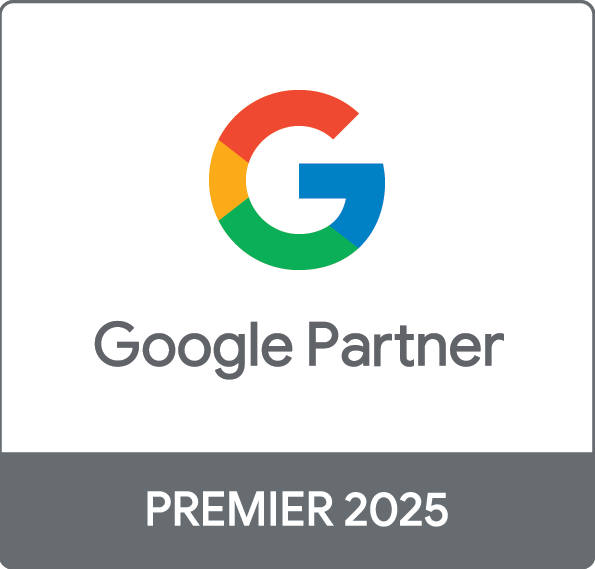Hint: It involves pirates! AAARRR.
In this multi-screened world, media dynamics are rapidly shifting, creating a looming clutter in the advertising space, overcrowded by brands fighting for a share of voice.
Delivering the right message at the right time to the right audience remains an elusive concept to many brands.
The missing ingredient? Curating a user-journey-based content strategy that is tailored to every user stage in order to establish context.
In a 2007 article “Anywhere the Eye Can See, It’s Likely to See an Ad”, the New York Times article mentions that a user is exposed to an average of 4,000 – 10,000 ads a day. 14 years later, one can only imagine how absurd that number might be.
To avoid any dilution of brand message, brands must modernise their marketing approach — beginning with the end user itself.
Step 1: Define Your User Personas
When meeting a potential employer for an interview, it’s important to do due diligence and research on the company and the interviewer to come prepared, right? Same applies in this case.
Before commencing to build a content strategy, it’s crucial to learn about the user’s persona — what are their profile attributes, habits, frustrations, likes, dislikes, and motivations. This will serve as a guide when writing content.
Here is an example of a user’s persona:
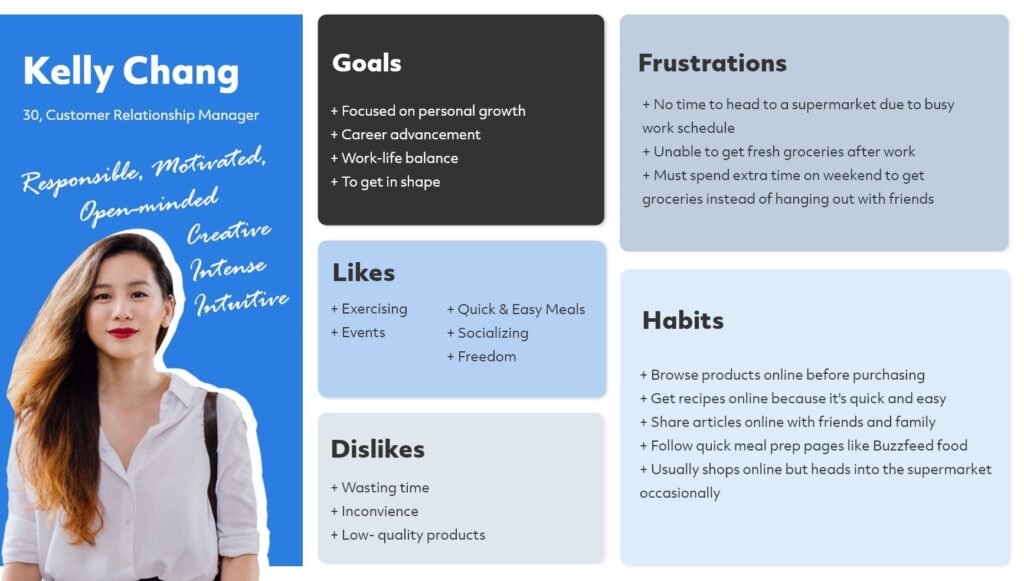
Step 2: Define Their User Journey
Map out various touch points where a user interacts with a brand. The touchpoints should not be viewed in isolation as they indirectly affect one another. Draw out a user’s interaction from when they become aware of a brand, to becoming a lead, to first trial, to becoming a new customer, then an advocate, and finally, becoming a loyal customer. Identify user actions, goals and feelings at every touchpoint for a clearer picture. This sales funnel framework can be explained by the Pirate metrics developed by Dave McClure of 500 Startups.
The framework consists of 6 stages – Awareness, Acquisition, Activation, Revenue, Retention and Referral (AAARRR) – it’s easy to see see why it’s termed the “Pirate metrics”.

Now that the acronym behind the Pirates model has been defined, it is time to map out a user’s behaviour at every user stage. Here is an example of a user journey map:
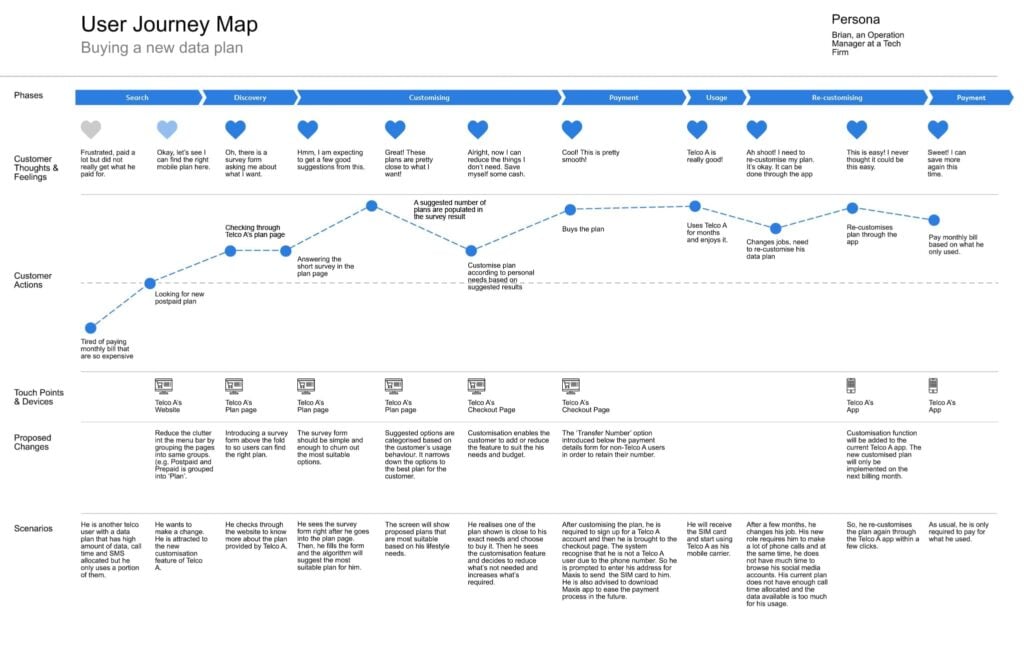
Step 3: Define Your Objective
Marketers often make the mistake of making broad goals, resulting in an unmeasurable content strategy. So how exactly do we define specific goals? Firstly, here are some standard goals of content marketing.
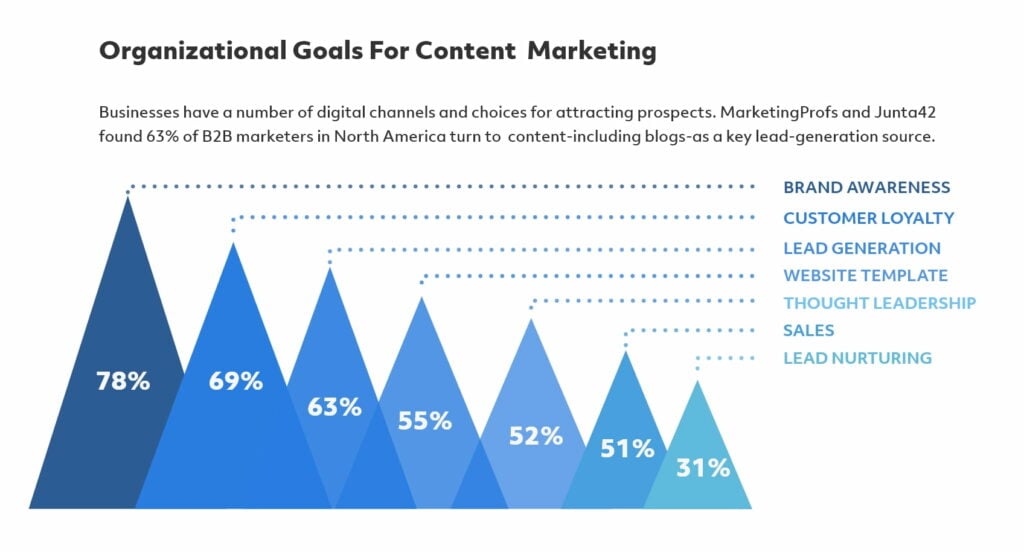
A useful method in defining specific goals is the S.M.A.R.T. method. S.M.A.R.T. stands for Specific, Measurable, Attainable, Relevant and Timely.
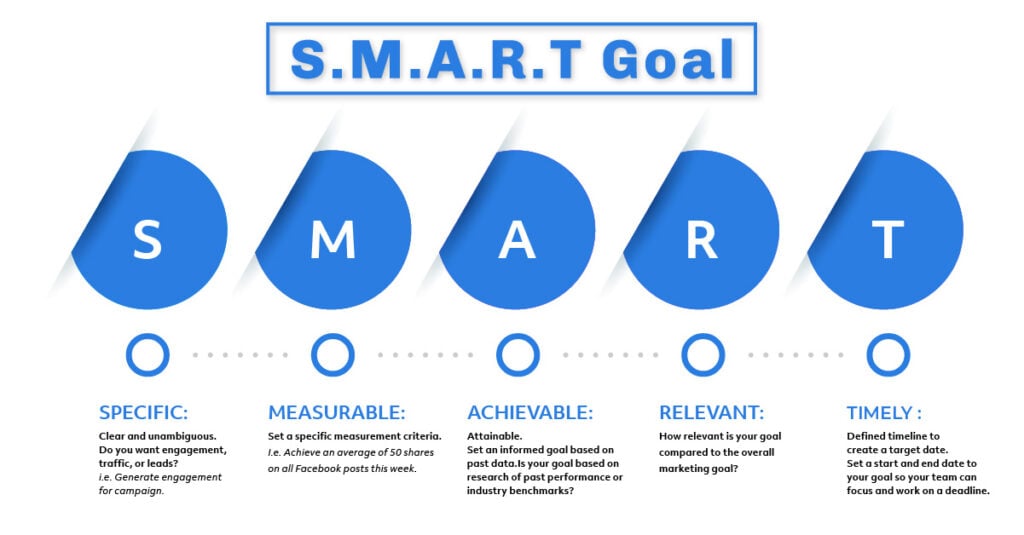
Let’s review a good example vs. a bad example of a content goal.

With an established content strategy goal, it’s much easier to assign the relevant content to each user stage.
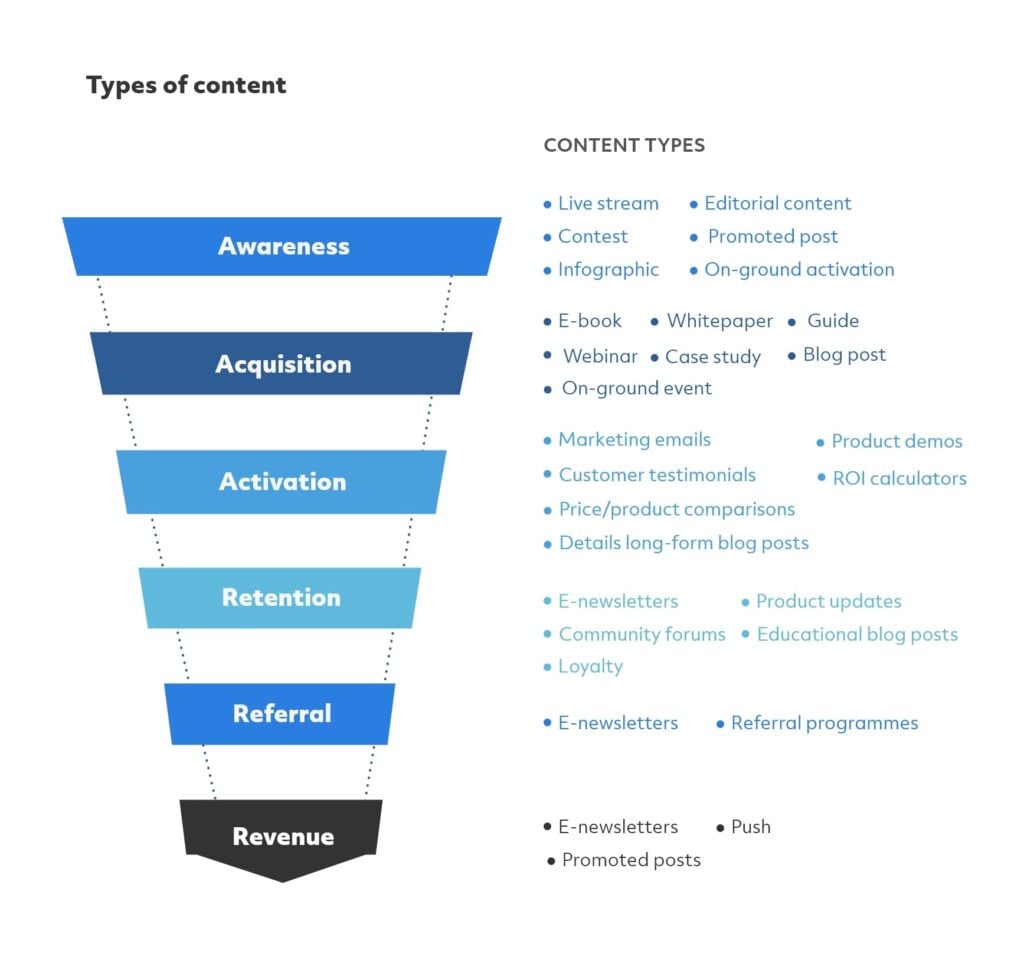
Step 4: Mapping Content via the AAARR Pirate Metrics Framework
The customer journey today resembles a leaky bucket rather than a funnel. It is no longer as straightforward. Customers are harder to retain throughout the sales funnel, especially if no proper user journey marketing is put in place.
Now more than ever, customers are seeking value when buying a product. This is where a well-designed content strategy based on AAARR comes in as a killer sales pitch.
What type of content goes into each stage? It depends. Some contents are specific to a certain user stage, some are more versatile and can apply throughout.
Shorter content like promoted posts might work better for acquiring new users at the top of the funnel. Long-form content like product demos might interest users in the Activation stage. The Hero-Hub-Hygiene content pyramid is an effective model to refer to when defining the right type of content at each stage.
1. Awareness
Content at this stage is aimed at catching attention and leaving an impression. Hero content which is the big, “Aha”, tent-pole events works at grabbing attention on a larger scale.
The Hero content can be further supplemented by Hygiene content— always-on “pull” content that ensures your brand remains top-of-mind.
2. Acquisition
Content in this next stage should offer an incentive to users to become a lead by providing their details. Content here can be anything from promotions to drive first purchase, to e-book and whitepaper downloads for more information.
3. Activation
Consider this stage as the final part of the sales pitch, consumers are already educated about the brand at this point and are now considering a purchase.
So how do we move a user from lead to customer? We need to persuade. Any content that solidifies product benefits will help to eliminate doubt at this stage.
4. Retention
A balanced mix between Hub content — regularly scheduled content for your prospect and Hygiene content helps to maintain engagement and increases brand recall. Content at this stage should be designed to create product value.
5. Referral
The value created in the Retention stage will pay off on this level. Even if referral efforts are incentivised (or not), customers will become advocates if they believe in what your brand stands for.
Word-of-mouth (WOM) is a powerful amplifier at this stage and content should focus on generating WOM.
6. Revenue
Content here zeroes in on upselling, cross-selling, or even introducing product packages to drive repeat purchases, making a sale profitable. For example, in terms of a subscription-based service, promoted posts or e-newsletters can be used as subscription renewal reminders.
Step 5: Measure and Review
Often one of the most overlooked steps in creating a content strategy is review. To fully gauge the effectiveness of content, the best practice is to measure content performance with quantifiable metrics.
Thereafter, content can be strategically tweaked based on performance.
Here is a helpful infographic to know which metrics matter at which stage:

To conclude, there is no one-size-fits-all content strategy out there. A thoughtfully crafted, data-driven, user-centered approach to content strategy is the way to stay ahead of competition. More importantly, brands will start to see the positive domino effect of a solid content strategy— forming a sustainable, long-term impact of creating value and growing revenue.
If you would like to enquire or learn more about our Content Marketing and Strategy services, drop us an email at hello@admiral.digital.
References:
- Skole, Jordan. “AAARRR! What Are Pirate Metrics?” Active Campaign, 22 Nov. 2016
- Balke, Melanie. “AARRR Framework- Metrics That Let Your StartUp Sound Like A Pirate Ship.” Medium, Medium, 26 Nov. 2017, https://medium.com/@ms.mbalke/aarrr-framework-metrics-that-let-your-startup-sound-like-a-pirate-ship-e91d4082994b.
- Patel, Neil. “How to Create a Content Strategy That Will Actually Drive Results.” Neil Patel, Neil Patel, 15 Feb. 2019



